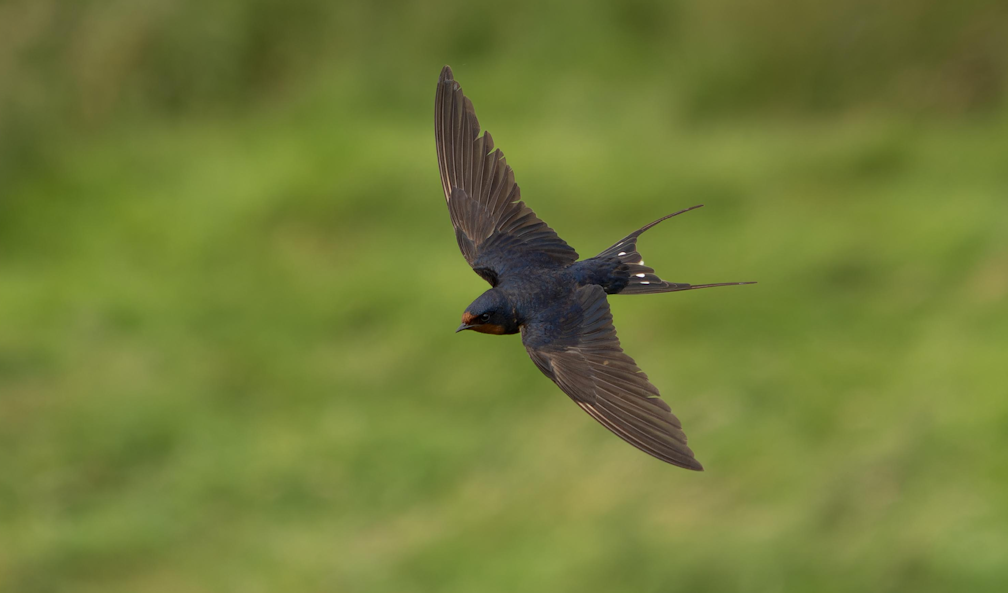The Barn Swallow is the most abundant swallow in North America. Historically, Barn Swallows nested in the entrances of caves, but like its relative, the purple martin, it has almost completely shifted to using artificial structures.
Many people across the United States can set their calendars to the exact day the Barn Swallows will return each spring. Ours show up on the first of day of May. They are a common bird around farms and other areas with adequate nest sites and insect availability.
Watching Barn Swallows hunt for insects while they fly is an amazing and enjoyable spectacle.

Barn Swallows are one of the most acrobatic of birds, not only do they put on a good show, but they eat insects almost constantly. For this reason, attracting Barn Swallows to your property may be one more positive step in an integrated approach to managing agricultural and garden insect pests.
Like most swallows, the Barn Swallow’s flight is distinctive. They swoop up and down and dart back and forth in their efforts to catch insects. Barn Swallows can fly at various heights from just above the ground to over 50 feet high.
Barn Swallows can be identified by their chestnut forehead, rufous and blue underparts, and dark, shiny blue backs. The one feature that sets the Barn Swallow apart from other swallows is its deeply forked tail. No other member of the swallow family has such a forked tail.
Barn Swallows prefer relatively treeless landscapes, such as fields, marshes, and large yards because they are aerial insectivores. This means they catch insects while flying, but they will sometimes take insects off the ground. Barn Swallows are very common around barnyard areas and often follow farm equipment, eating the insects that are flushed into the air.
Not only is the Barn Swallow a great performer in flight, but it also benefits humans. Barn Swallows eat a wide range of both agricultural and community insect pests. Insects make up most of their diet. For this reason, farmers and gardeners do not need to fear swallows eating their fruits and vegetables, because the swallows are primarily targeting insects.
The Barn Swallow is considered an opportunistic eater, its diet normally reflects locally available insect species. Research indicates Barn Swallows, along with other members of the swallow family, consume large numbers of flies, which can plague livestock. Sheep, horses and donkeys are susceptible to many problems that can arise from different species of flies. Barn Swallows are often seen flying around livestock, where they eat flies that are attracted to the animals. Incorporating Barn Swallow nesting habitats with a livestock operation may enhance a multi-pronged approach to a fly management strategy; potentially decreasing flies on your farm.

